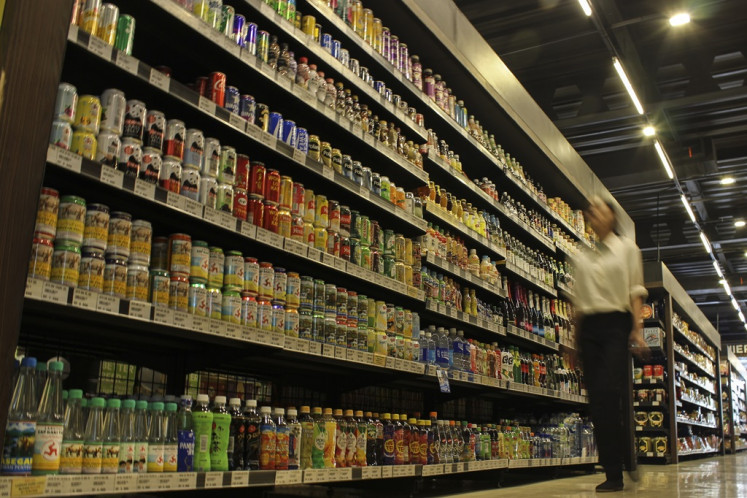Popular Reads
Top Results
Can't find what you're looking for?
View all search resultsPopular Reads
Top Results
Can't find what you're looking for?
View all search resultsAnalysis: Indonesia begins study for extending Whoosh! to Surabaya
Change text size
Gift Premium Articles
to Anyone
 Officers check the condition of the Tunnel Boring Machine (TBM) for the Jakarta-Bandung Fast Train Project in Tunnel 1 in the Pondok Gede area, Bekasi DKI, Tuesday, 12/15/2020. The TBM machine has managed to penetrate the tunnel 1 tunnel structure along the 1.8 KM transverse under the Jakarta-Cikampek toll road.
Officers check the condition of the Tunnel Boring Machine (TBM) for the Jakarta-Bandung Fast Train Project in Tunnel 1 in the Pondok Gede area, Bekasi DKI, Tuesday, 12/15/2020. The TBM machine has managed to penetrate the tunnel 1 tunnel structure along the 1.8 KM transverse under the Jakarta-Cikampek toll road.
T
he plan to extend the Whoosh! high-speed rail (HSR) to Surabaya is entering its early stages. The route extension, which currently only connects Jakarta and Bandung, is necessary to increase the high-speed public transport utilization from its current state. However, there are concerns regarding the possible downsides from continued partnership with China to develop the project, as well as calls for a more thorough feasibility study on the extension plan.
China’s National Development and Reform Commission (NDRC) has agreed with Indonesia to start a joint study to appraise the cost and commercial feasibility of Whoosh! extention to Surabaya. State-Owned Enterprises (SOEs) Deputy Minister Kartika Wirjoatmodjo said the funding and cooperation schemes for the project’s funding have not yet been agreed upon, which contradicted Maritime and Investment Affairs Coordinating Minister Luhut Binsar Pandjaitan who said that a loan with favorable terms has been attained.
Indonesia has aimed to eventually extend Whoosh! to Surabaya since they began developing the Jakarta-Bandung HSR. Transportation Minister Budi Karya Sumadi said the extended HSR line is predicted to cut down train travel time from Jakarta to Surabaya by five hours to only four hours. The Whoosh! Jakarta to Surabaya line will go through southern part of Java, namely from Bandung to Kertajati, Purwokerto, Yogyakarta, Solo, Madiun, and finally Surabaya.
Previously, Universitas Indonesia Transportation Professor Sutanto Soehodho said a route through the northern part of Java is more feasible due to the flat terrain, while the south corridor mountainous, costing more to build a railway. However, the southern corridor goes through popular cities such as Yogyakarta and Solo, making it potentially more profitable.
Experts have expressed the urgency of extending the HSR’s line to Surabaya because the current 142-kilometer (km) route poses a challenge to the public transport’s efforts in achieving profitability, with it having a relatively short distance compared to other HSRs that tend to run over 400 km.
The cost and feasibility study for the extension of Whoosh! involves China Railway, which holds a 40 percent stake in the Sino-Indonesian consortium KCIC, with the remaining shares held by Indonesian SOEs led by Kereta Api Indonesia (KAI).
A thorough execution of the study for extending Whoosh! to 690 km is of particular concern after the Jakarta-Bandung line resulted in a cost overrun of US$7.5 billion (about Rp118.8 trillion), or around Rp834.9 per km, from its projected cost of US$5.5 billion (about Rp87.1 trillion). The cost overrun caused the need for assistance from the state budget. There are concerns that the extension could lead to a bigger cost overrun since the extension costs more, forecasted to be at least Rp576 trillion based on the Jakarta-Bandung line’s cost per km.


















